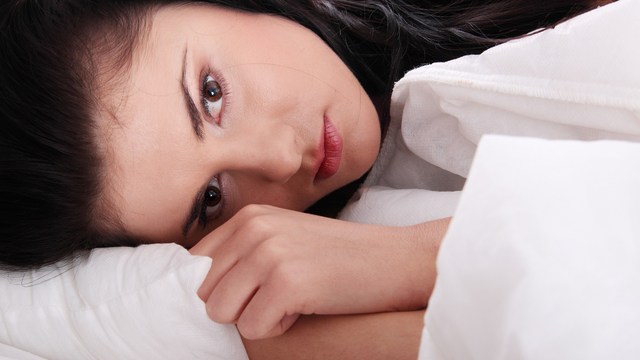Focal dystonias are adult-onset forms that affects a specific area of the body. (Dystonia-Foundation.org)
Most focal dystonias are primary (meaning that it is the only neurological symptom and presumed to have a genetic component), though secondary cases are documented. Focal dystonia may affect muscles of the eyes, mouth, vocal cords, neck, hands, and feet. Types of focal dystonia include:
Blepharospasm—Affects the eyes
Cervical dystonia (spasmodic torticollis)—Affects neck and shoulders
Laryngeal dystonia (spasmodic dysphonia)—Affects the vocal cords
Hand dystonia (writer’s cramp)—Affects the hands and forearm
The dystonias are movement disorders in which sustained muscle contractions cause twisting and repetitive movements or abnormal postures. The movements, which are involuntary and sometimes painful, may affect a single muscle; a group of muscles such as those in the arms, legs, or neck; or the entire body. Those with dystonia usually have normal intelligence and no associated psychiatric disorders.
(National Institute of Neurological Disorders and Stroke)
What are the symptoms?
Dystonia can affect many different parts of the body. Early symptoms may include a deterioration in handwriting after writing several lines, foot cramps, and/or a tendency of one foot to pull up or drag; this may occur "out of the blue" or may occur after running or walking some distance. The neck may turn or pull involuntarily, especially when the patient is tired or stressed. Sometimes both eyes will blink rapidly and uncontrollably, rendering a person functionally blind. Other possible symptoms are tremor and voice or speech difficulties. The initial symptoms can be very mild and may be noticeable only after prolonged exertion, stress, or fatigue. Over a period of time, the symptoms may become more noticeable and widespread and be unrelenting; sometimes, however, there is little or no progression.
How are the dystonias classified?
One way to classify the dystonias is according to the parts of the body they affect:
Generalized dystonia affects most or all of the body.
Focal dystonia is localized to a specific part of the body.
Multifocal dystonia involves two or more unrelated body parts.
Segmental dystonia affects two or more adjacent parts of the body.
Hemidystonia involves the arm and leg on the same side of the body.
Some patterns of dystonia are defined as specific syndromes:
Some cases of primary dystonia may have different types of hereditary patterns. Knowing the pattern of inheritance can help families understand the risk of passing dystonia along to future generations.
When do symptoms occur?
In some individuals, symptoms of a dystonia appear in childhood, approximately between the ages of 5 and 16, usually in the foot or in the hand. In generalized dystonia, the involuntary dystonic movements may progress quickly to involve all limbs and the torso, but the rate of progression usually slows noticeably after adolescence.
For other individuals, the symptoms emerge in late adolescence or early adulthood. In these cases, the dystonia often begins in upper body parts, with symptoms progressing slowly. A dystonia that begins in adulthood is more likely to remain as a focal or segmental dystonia.
Dystonias often progress through various stages. Initially, dystonic movements are intermittent and appear only during voluntary movements or stress. Later, individuals may show dystonic postures and movements while walking and ultimately even while they are relaxed. Dystonic motions may lead to permanent physical deformities by causing tendons to shorten.
Other drugs act on dopamine, a neurotransmitter that helps the brain fine-tune muscle movement. Some drugs which increase dopamine effects include levodopa/carbidopa and bromocriptine. DRD has been remarkably responsive to small doses of this dopamine-boosting treatment. On the other hand, patients have occasionally benefited from drugs that decrease dopamine, such as reserpine or the investigational drug tetrabenazine. Once again, side effects can restrict the use of these medications.
Anticonvulsants including carbamazepine, usually prescribed to control epilepsy, have occasionally helped individuals with dystonia.
Botulinum toxin. Minute amounts of this familiar toxin can be injected into affected muscles to provide temporary relief of focal dystonias. First used to treat blepharospasm, such injections have gained wider acceptance among physicians for treating other focal dystonias. The toxin stops muscle spasms by blocking release of the excitatory neurotransmitter acetylcholine. The effect lasts for up to several months before the injections have to be repeated.
Surgery and other treatments - The ultimate goals of research are to find the cause(s) of the dystonias so that they can be prevented, and to find ways to cure or more effectively treat people now affected. The National Institute of Neurological Disorders and Stroke (NINDS), a unit of the Federal Government's National Institutes of Health (NIH), is the agency with primary responsibility for brain and neuromuscular research. NINDS sponsors research on dystonia both in its facilities at the NIH and through grants to medical centers throughout the country. Scientists at the National Institute on Deafness and Other Communication Disorders (NIDCD), also part of the NIH, are studying improved treatments for speech and voice disorders associated with dystonias. The National Eye Institute (NEI) supports work on the study of blepharospasm and related problems (see above) and the National Institute of Child Health and Human Development (NICHD) supports work on dystonia, including the rehabilitation aspects of the disorder.
The search for the gene or genes responsible for some forms of dominantly inherited dystonias continues. The gene for Segawa's dystonia has been found. It codes for an enzyme important in the brain's manufacture of dopamine.
Where can I get more information?
For more information on neurological disorders or research programs funded by the National Institute of Neurological Disorders and Stroke, contact the Institute's Brain Resources and Information Network (BRAIN) at:
BRAIN
P.O. Box 5801
Bethesda, MD 20824
(800) 352-9424
http://www.ninds.nih.gov
Information also is available from the following organizations:
Dystonia Medical Research Foundation
1 East Wacker Drive
Suite 2810
Chicago, IL 60601-1905
[email protected]
http://www.dystonia-foundation.org
Tel: 312-755-0198
Fax: 312-803-0138
National Spasmodic Torticollis Association
9920 Talbert Avenue
Fountain Valley, CA 92708
[email protected]
http://www.torticollis.org
Tel: 714-378-9837 800-HURTFUL (487-8385)
WE MOVE (Worldwide Education & Awareness for Movement Disorders)
204 West 84th Street
New York, NY 10024
[email protected]
http://www.wemove.org
Tel: 212-875-8312
Fax: 212-875-8389
Aimee Boyle is a freelance writer and regular contributor to EmpowHer in Muscles and Sexuality. Please visit her blog at http://www.straightandnarrow.yolasite for more of her stylings. She lives on the beautiful Connecticut shoreline with her family.





Add a CommentComments
There are no comments yet. Be the first one and get the conversation started!